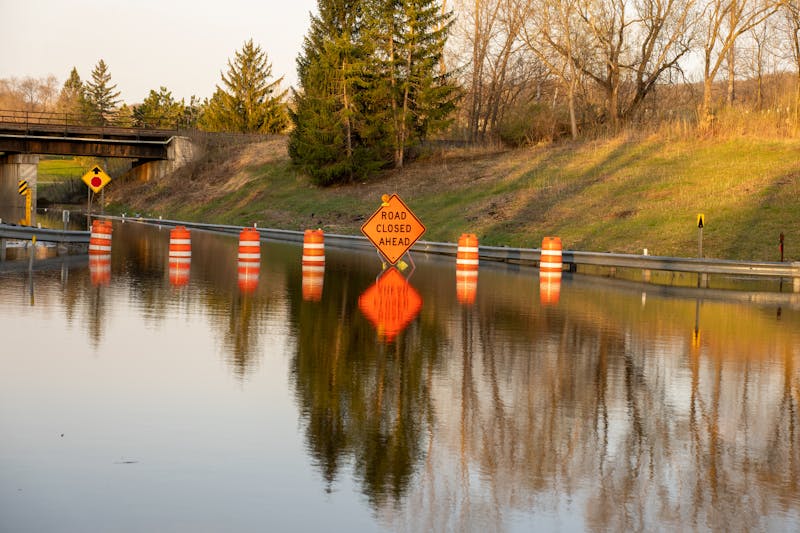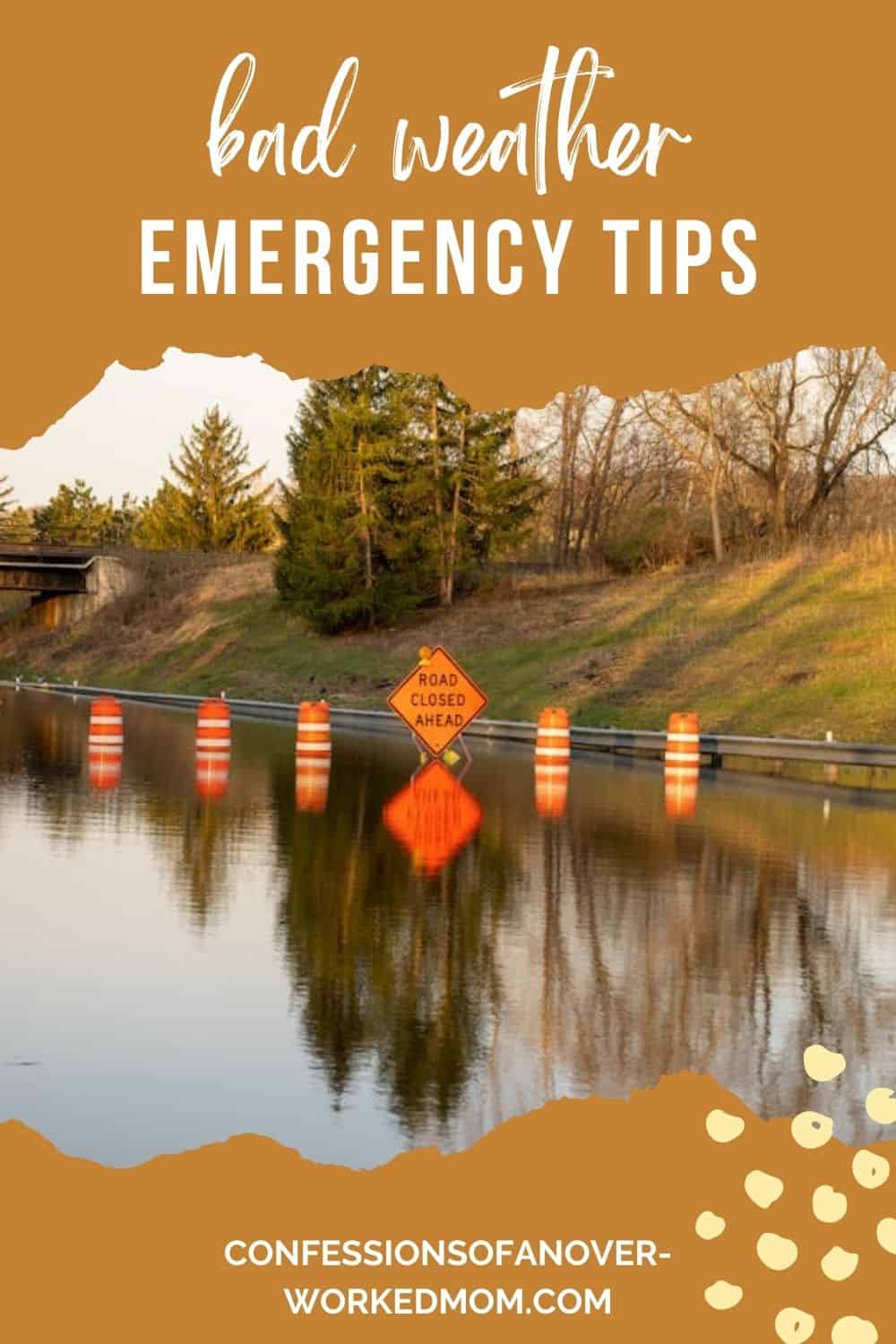Last Updated on August 11, 2024 by Ellen Christian
In today’s unpredictable climate, preparing for bad weather is more important than ever. Natural disasters such as hurricanes, floods, tornadoes, and winter storms can strike with little warning, leaving you without essential services like electricity, water, and access to food.
Posts may be sponsored. This post contains affiliate links, which means I will make a commission at no extra cost to you should you click through and make a purchase. As an Amazon Associate I earn from qualifying purchases.
Preparing for Bad Weather: Essential Emergency Preparedness Tips
Being ready not only ensures your safety but also provides peace of mind in times of crisis. Here are some essential emergency preparedness tips to help you get ready for bad weather.
If you’re new to considering emergency preparedness, starting with one of these can save you lots of time.
1. Create an Emergency Plan
Before bad weather strikes, it’s crucial to have a comprehensive emergency plan in place. This storm preparedness plan should include:
– Evacuation routes: Know the safest and quickest routes to leave your area if evacuation becomes necessary.
– Communication plan: Establish how you will communicate with family members during an emergency, especially if you’re not together when disaster strikes.
– Meeting points: Designate specific meeting places if you are separated from loved ones.
– Special considerations: Make arrangements for pets, older family members, or those with disabilities. Check out this emergency checklist for pets.
Your plan should be reviewed and practiced regularly to ensure everyone in your household is familiar with the procedures.
2. Assemble an Emergency Kit
An emergency kit is a collection of essential items that you may need during a disaster. When preparing for bad weather, here’s what your home family safety kit should include:
– Water: At least one gallon per person per day for at least three days, for drinking and sanitation.
– Food: A three-day supply of non-perishable food. This is where freeze-dried foods can be particularly useful, as they have a long shelf life, are lightweight, and require minimal preparation.
– Battery-powered or hand-crank radio: To stay updated on weather conditions and emergency broadcasts. We like this one as it also charges your phone.
– Flashlight and extra batteries: Power outages are common during bad weather, so having a reliable light source is critical.
– First-aid kit: Include bandages, antiseptics, medications, and any necessary prescription drugs.
– Personal hygiene items: Moist towelettes, garbage bags, and plastic ties for personal sanitation.
– Multi-tool: A tool that combines a knife, pliers, and other functions can be invaluable in an emergency. This one has a lifetime warranty.
– Blankets and clothing: Keep extra blankets, warm clothing, and rain gear to protect against the elements.
– Cash: In the event of power outages, ATMs and credit card machines may not work, so having cash on hand is essential.
3. Stock Up on Freeze-Dried Foods
Freeze-dried foods are an excellent addition to your emergency preparedness plan. Unlike canned goods, freeze-dried foods are lightweight, have a long shelf life, and retain most of their nutritional value. Here’s why you should consider keeping them on hand:
– Long Shelf Life: Freeze-dried foods can last up to 25 years when stored properly. This makes them ideal for long-term emergency storage.
– Easy Preparation: Most freeze-dried foods only require water to rehydrate, and they can be eaten hot or cold, depending on your circumstances.
– Nutritional Value: The freeze-drying process preserves the food’s nutrients, ensuring you get the vitamins and minerals you need during an emergency.
– Variety: Freeze-dried options include fruits like freeze dried pineapple bits, vegetables, meats, and complete meals, allowing for a diverse and balanced diet during emergencies.
Popular brands like Mountain House, Wise Company, and Augason Farms offer a wide range of freeze-dried food products, from breakfast items to full entrees. You don’t have to give up your favorite treats like ice cream, you can get freeze dried ice cream and lots of other treats from Freeze Dried USA.
4. Prepare Your Home
Your home is your first line of defense during bad weather. Take steps to ensure it’s as prepared as you are:
– Secure outdoor items: Bring in or secure outdoor furniture, grills, and other items that could become projectiles in high winds.
– Trim trees and shrubs: Regularly trim trees and shrubs around your home to minimize the risk of branches falling and causing damage.
– Reinforce windows and doors: Use storm shutters, or board up windows with plywood if necessary. Reinforce garage doors to withstand strong winds.
– Check your roof: Ensure your roof is in good condition, and repair any loose shingles or tiles to prevent leaks.
– Install a generator: A backup generator can keep essential appliances running during a power outage. Ensure you know how to operate it safely and have enough fuel on hand.
5. Stay Informed
Staying informed about the weather is crucial for timely and effective response. Here’s how you can ensure you’re up-to-date:
– Weather apps: Install reliable weather apps on your phone that provide real-time alerts and updates.
– NOAA Weather Radio: A battery-powered or hand-crank NOAA Weather Radio can provide continuous updates, even when cell service is down. This one also gets emergency alerts.
– Local news and social media: Follow local news outlets and emergency management agencies on social media for real-time information and instructions.
6. Consider Special Circumstances
Every household has unique needs that should be addressed in your emergency preparedness plan:
– Medications and medical supplies: Ensure you have a sufficient supply of prescription medications, as well as any necessary medical equipment, such as insulin pumps or oxygen tanks.
– Pet supplies: Have a supply of pet food, water, and medications. Include a carrier or leash, as well as comfort items like a blanket or toy.
– Infants and young children: Stock up on baby formula, diapers, wipes, and other essential supplies for infants and toddlers.
7. Practice and Review Regularly
An emergency plan is only effective if it’s practiced regularly. Schedule regular drills with your family to ensure everyone knows what to do during an emergency. Review and update your emergency kit and plan at least once a year, or after any significant life changes, such as a move or the addition of a family member.
8. Stay Calm and Be Ready to Adapt
In any emergency situation, staying calm and being flexible is key. Plans might need to be adjusted based on the specific circumstances of the disaster, so being mentally prepared to adapt is just as important as having the right supplies.
Conclusion
Preparing for bad weather is an essential part of ensuring your family’s safety and well-being. By creating a comprehensive emergency plan, assembling a well-stocked emergency kit, including freeze-dried foods, and taking steps to protect your home, you can face the challenges of severe weather with confidence.
Remember to stay informed, practice your plan regularly, and remain calm and adaptable in the face of unexpected situations. With these preparations in place, you’ll be ready to weather any storm that comes your way. Start preparing for bad weather today.

Ellen is a busy mom of a 24-year-old son and 29-year-old daughter. She owns six blogs and is addicted to social media. She believes that it doesn’t have to be difficult to lead a healthy life. She shares simple healthy living tips to show busy women how to lead fulfilling lives. If you’d like to work together, email info@confessionsofanover-workedmom.com to chat.







